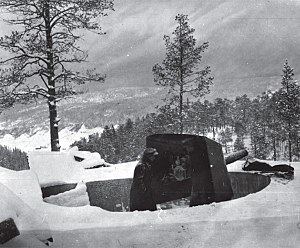Omaha Beach, most people you speak to instantly recognise the name of Omaha Beach from World War 2 films like The Longest Day or Saving Private Ryan. Younger people may remember it from war games like Medal of Honour. What one tends to remember are the brutal scenes which greeted the young American soldiers as they approached the beaches and disembarked. In many cases, as soon as the doors opened on the landing craft the bullets from the German MG42's were killing the Americans. The German opponents were excellent, well trained and fighting for their lives.
 |
| D-Day Beaches, image found at:http://cponline.thecanadianpress.com/graphics/2014/static/CP-Normandy-Landings.png |
What caused the massive loss of live at Omaha?
The geography of the beach was the most difficult of any. Sheer cliffs, a sea wall 1-4 meters in height, shingle which was impassable to vehicles, bunkers, trenches and blockhouses were all zeroed in on the beach which at high tide was but a few meters wide. Also there were only four closely guarded exits off the beach which led inland.
The other beaches on D-Day made substantial use of British inventions designed to advance inland quicker minimising loss of human life, 'Hobart's Funnies' ( see previous blog posts http://oldecuriosity.blogspot.co.uk/search/label/Hobart%27s%20Funnies ) The U.S troops on Omaha Beach did not have the benefit of these, they did try to launch DD tanks but 27 were lost before they made it to the beach.
 |
| Robert Capa on Omaha beach taking cover behind German beach defences found at: https://www.google.co.uk/imgres?imgurl=http://www.skylighters.org/photos/hedgehog.jpg&imgrefurl=http://www.skylighters.org/photos/robertcapa.html&h=300&w=449&tbnid=5dEvmT-Kj0Z7hM:&docid=hXT_dPAuT8zE4M&ei=GrxcVp6tKIT5UoCarZAO&tbm=isch&ved=0ahUKEwieovepiLnJAhWEvBQKHQBNC-IQMwglKAIwAg |
At 0630hrs the first men to land on the beach were engineers who had to clear the way for the assault troops. The casualty rate among them was high - among U.S Naval Engineers the rate was 41%, (Bowman, p.64). They had to destroy beach obstacles before men could land, the beach was thick with them, tetrahedrons and stakes topped with mines to destroy landing craft and troops. The assault troops who landed next were from the American 1st Infantry Division (the Big Red One) and the 29th Infantry Division. The USAAF was supposed to bomb the beach and its defences before the landings, but had missed the target completely and dropped bombs further inland instead. The first landing craft came under fire 200-300 yards from shore. When they stopped at the beach and the ramps lowered, bullets were killing men before they could get out. It was a scene not unlike that of the First World War, one of mass slaughter.
German opposition consisted of 352nd Division and the 716th, eight battalions instead of four (H astings, p.115). They were no second rate troops. They were well trained and armed. MG42's, Neberlwerfer mortars, artillery guns and rifles all firing on the Americans as they landed.
The Americans that did survive the landing and made it onto the beach found some shelter among the beach obstacles or the shingle wall. In dribs and drabs, leaving dead and wounded comrades behind they waited, finding what little cover they could. By 0800 Officers were organising these groups and they started to advance. The most famous quote came from Brigadier Cota,
"There are only two kinds of people who are staying on this beach: those who are already dead and those that are gonna die. Now get off your butts, you're the fightin' 29th."
Meanwhile the Germans were running out of ammunition and urgently needed reinforcements. They were overwhelmed by sheer weight of numbers. Sheer determination and bravery by the U.S troops won the day at Omaha. They lost so many men due to the resilience of the German defenders and the difficult terrain. Bombs were dropped in the wrong place by the USAAF. DD tanks failed to make it to shore, but against all odds, the U.S army landed at Omaha Beach and slowly advanced inland.
Sources Used
D-Day, The Untold Story, found at: http://www.bbc.co.uk/history/ancient/archaeology/marine_dday_underwater_01.shtml
Bowman, M, Remembering D-Day, Personal Histories Of Everyday Heroes (2004).
Hastings, M, Overlord, (1984).









































